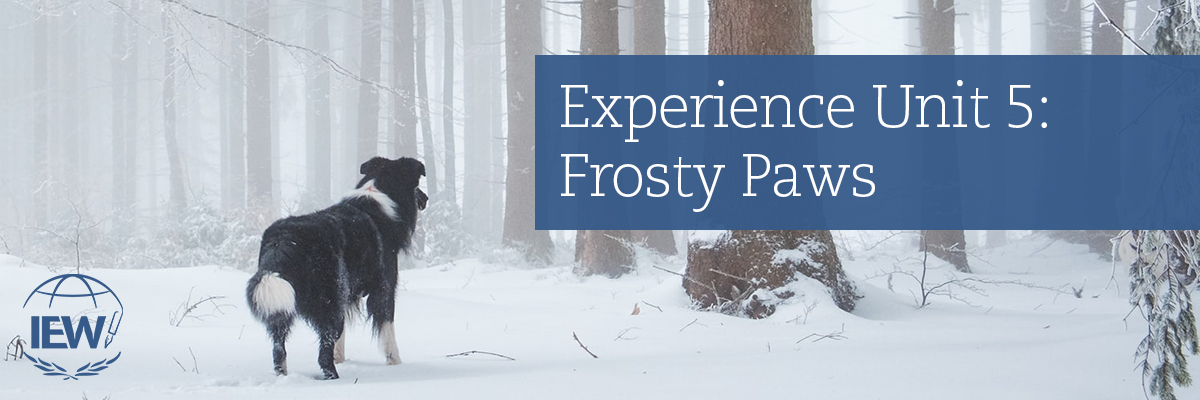
Now that we are in the month of December, many teachers are focusing on Unit 5: Writing from Pictures. Out of all of the units, this one is by far my favorite. A combination of both creative and fact-based writing, Unit 5 allows students to exercise their creativity while they recount an event. A picture or series of pictures serves as the only source text. At its essence Unit 5 develops a student’s thinking skills by having the student examine an image and then ask questions to come up with potential answers, which are then used as content for the paragraph. Unit 5’s pictures serve as a bridge between using written source texts and the upcoming Unit 7, which uses no source texts at all. As such, Unit 5 is a great unit to continue building what was begun in Unit 3: developing the student’s ability to come up with questions as well as answers for those questions.
These pictures can be as simple as a quickly hand-drawn cartoon to as detailed as a photo or piece of art. The traditional presentation is for a three-paragraph assignment, but this need not be the rule. Beginning students often enjoy starting out by using one image to write one paragraph for the Unit 5 composition.
Generally Unit 5 assignments include a series of three images that show a progression in action. Here again, this is not a firm requirement. Single images also work well. As your students view the image, have them consider questions such as What happened before the image? What happened after the image? What is happening just outside of the image? and What is happening that can’t be seen within the frame of the image? The answers they arrive at populate the key word outline.
Today we would like to present two images as inspiration for Unit 5 paragraphs. You can have your students pick one to write about, or you can create two assignments and have them write on each one. Here is the first photo:
And here is the second:
To help your students get started with a key word outline, help them come up with questions to ask. Here are a few possibilities to consider that would work for either image:
-
Where is the animal? Just outside the house? Miles from home?
-
Why is the animal alone? Or is it alone? Could there be a person just outside of the frame?
-
Where is it happening? In Canada? Near your home? On a distant planet?
-
When is the action taking place? Right now? One Christmas Eve? In the 1800s? Some time in the future?
-
What happened just before the photo was taken? Did the animal run away? If so, why? Did the animal somehow get separated from the family?
-
What is the animal thinking? Is it hungry? Excited? Worried? Looking forward to an adventure? Determined to find its family? Worried about the weather?
-
What is happening outside of the frame? Does the cat or dog have babies tucked up nearby? Is there a predator lurking? Is there a warm cottage nearby?
-
What might the animal be smelling? The smoke of a fire? The scent of prey? The freshness of new fallen snow?
-
What is the animal hearing? Carols being sung in the distance? Sleigh bells ringing? The rushing sound of cars near a highway? The rush of a nearby river?
-
What is the animal feeling? The crunch of ice-covered snow on its paws? The softness of new fallen snow? A delicious or perhaps distressing sense of cold fur? A chapped nose?
Can you come up with even more questions to help your students describe the event?
A ONE-PARAGRAPH ASSIGNMENT
For younger or new students to Structure and Style, you may simply want to have them write one paragraph describing the image.
A THREE-PARAGRAPH ASSIGNMENT
Other more experienced students, however, will find a fun challenge in imagining what the scene looks like just prior to the one presented as well as what might have happened just afterwards. Doing this, students will be able to use that one picture to create a three-paragraph paper.
For those of you who have a Premium Membership, you can create a custom checklist that follows EZ+1 for your students to follow. If you would like more information about this engaging unit, listen to this webinar, or visit our forums, a spot where you can ask questions and receive feedback from fellow members.
|
Jennifer Mauser has always loved reading and writing and received a B.A. in English from the University of Kansas in 1991. Once she and her husband had children, they decided to homeschool, and she put all her training to use in the home. In addition to homeschooling her children, Jennifer teaches IEW classes out of her home, coaches budding writers via email, and tutors students who struggle with dyslexia. |

